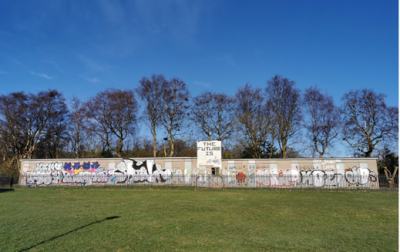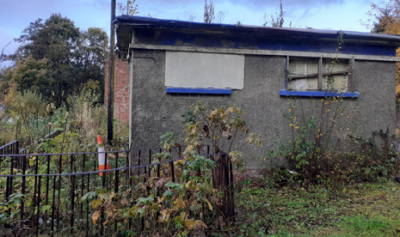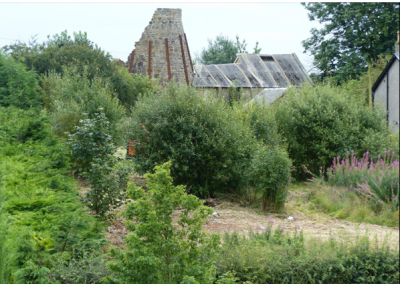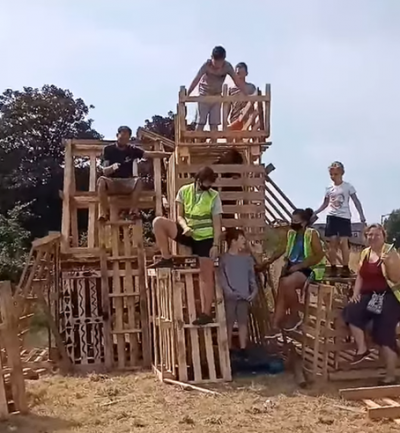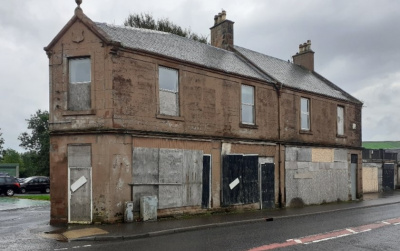Transforming Vacant and Derelict Land
There are a number of resources available to help bring vacant and derelict land back into productive use, both for owners of these sites and for individuals and community groups keen to take them on. Take a look at the resources below – including a map, toolkit, framework, funding guidance, and some inspirational case studies – to help you get started.
DUSTE Map
Working with SEPA and the Green Action Trust we have published a map of long-term, derelict urban sites (DUSTEs), which map includes ownership details for each site. Land owners, including local authorities, are being asked to make a public commitment to taking proactive steps to address the vacant and derelict sites identified.
The map locates over 500 of Scotland’s long-term derelict urban sites (DUSTEs). Essentially, these are Scotland’s ‘stuck sites’ which are areas of land (over 0.1 hectares) located in urban areas and which have been registered as derelict sites since the 2000s – in some cases even earlier. Many of these sites have been on the Scottish Vacant and Derelict Land Register for decades and are located in areas of multiple deprivation, which are negatively impacting the area and wellbeing of residents. These abandoned or unloved sites could be much more if recognised as valuable local assets for communities and Scotland as a whole. These sites are opportunities to:
- Build new homes – limit urban sprawl, protect our green spaces and revitalise our town centres.
- Provide new allotments and city farms – make it easier for people to choose fresh, seasonal, locally grown food.
- Create new parks and green spaces – great for physical and mental wellbeing and for biodiversity.
- Attract new investment – creating jobs and wealth in parts of the country that need it most.
- Generate renewable energy – helping to tackle fuel poverty.
Bringing abandoned and unloved urban places back into use could help us tackle climate change, improve health and wellbeing, create more resilient communities and rebuild our economy in a way that helps everyone achieve their full potential. Across Scotland, communities are coming together to revitalise unloved spaces and breathe new life into them. Looking for inspiration? Read some inspiring examples of what's been achieved so far.
The map shows opportunities for reuse and also where there is some activity underway – whether that’s nature already claiming land and supporting local biodiversity or where redevelopment is ongoing. The map also showcases long-term derelict urban sites that have been repurposed.
How to use the map
Use the plus '+' and minus '-' keys to navigate into and out of the map. Each site is colour-coded to give additional information about its current state - see the key below. You can filter these by clicking on the double arrow at the top left of the map. You can contact us to ask for an accessible version of the map.
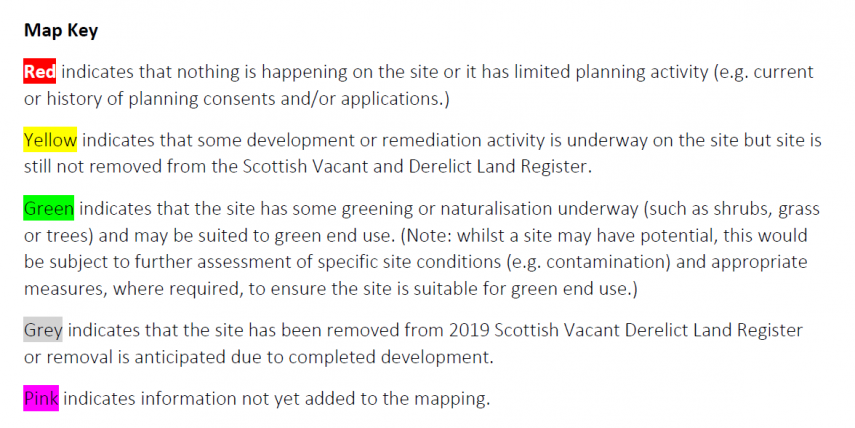
Please note that the data is taken from Scotland’s Vacant and Derelict Land Register which is collected by the Scottish Government on an annual basis through submissions made by local planning authorities. All efforts have been made to ensure accuracy of the data and this will be kept under review and updated. If you have any queries regarding the data on the map please contact info@landcommission.gov.scot. For information on specific sites, please contact the relevant local planning authority.
Resources - Getting Started
There is a wide range of resources to help you get started tackling vacant and derelict land in your area, whether you are an individual, a community group, or a land owner looking to revitalise unloved land and bring it back into productive use.
To help communities find out how they can bring unloved places back into use, including how to go about finding out who owns a piece of land, together with DTAS we have created a Vacant and Derelict Land Community Route Map that will take you through the process step by step. To help communities and decision makers properly assess the impacts of vacant and derelict sites, we have created a toolkit alongside a funding table identifying the different sources of funding available for regeneration of derelict sites. A framework has also been developed to assess the impact of bringing sites back into use that takes account of wider social, environmental and community benefits. This framework is to help change Scotland’s approach to land reuse by looking beyond financial returns and to capture the wider benefits that the reuse of sites could generate for society.
The resources below signpost to a range of organisations that can provide information on suggested uses for sites and also to get more information how to go about reusing these sites in practice – whether as a land owner, local resident, a local enterprise or investors as well as those involved in place-making.
Vacant and derelict land routemap
A handy guide to finding out how you and your community can bring unloved places back into use.
Search the Land Register for Ownership information
Search the land register to find property owners.
Funding sources for bringing vacant and derelict land back into use
This guide gives a brief description of different funding sources available for bringing vacant and derelict land back into productive use, the main limitations of each and what type of activity the funding is most suitable for.
Community Ownership Support Service
The Community Ownership Support Service website has a lot of information about routes for community ownership, ranging from asset transfer to Community Right to Buy for Abandoned, Neglected and Detrimental Land (introduced in 2018).
A toolkit has been put together to help with temporary use of a site. The Stalled Spaces Toolkit (Architecture and Design Scotland) provides guidance and examples from Scotland on how this can be achieved.
Illustrative examples/case studies
Bringing abandoned and unloved urban places back into productive use could help us tackle climate change, improve health and wellbeing, create more resilient communities and rebuild our economy in a way that helps everyone achieve their full potential. Here are some inspiring examples of how this can be done.
Scottish Land Commission Land Rights and Responsibilities Protocols
This guidance provides a framework on how to identify, capture and quantify the wider benefits of reusing vacant and derelict land, so that such benefits can be compared to the costs of bringing sites into productive use.
Community Impact Tool
Use this survey and scoring tool to help understand and collect evidence of how a vacant or derelict site makes communities feel. It is intended to help gauge and measure how sites impact community wellbeing and neighbourhoods.
Guidance on assessing the full economic benefits of the productive reuse of land
This guidance provides a framework on how to identify, capture and quantify the wider benefits of reusing vacant and derelict land, so that such benefits can be compared to the costs of bringing sites into productive use.
Historic Environment Scotland Advice and Support
This covers advice and support on listing, scheduling and designations, planning, advice on maintaining and making changes to traditional buildings, and applying for consents to make changes to historic buildings, scheduled monuments or Historic Marine Protected Areas.
Funding sources for bringing vacant and derelict land back into use
This guide gives a brief description of different funding sources available for bringing vacant and derelict land back into productive use, the main limitations of each and what type of activity the funding is most suitable for.
SEPA provide information and guidance on planning and environmental regulation, flood risk, and environmental impact assessments.
SEPA advice for planning authorities
Information about development plans and development management covering issues that include water, drainage, soils, air quality, contaminated land, and marine development. Guidance is also available for specific development types – windfarms, hydro schemes, marine development and aquaculture, and cemeteries.
I would like to find more information on:
- Green Action Trust provides a vast array of services, enabling a range of private, public and third sector partners to turn their ambitions into reality.
- Greenspace Scotland works with a wide range of national and local partners on the planning, development, sustainable management, use and evaluation of greenspaces, green networks and green infrastructure.
- NatureScot has Green Infrastructure Community Engagement Fund Projects
- Thrive outdoors is working to embed outdoor play and learning into the fabric of Scottish life so that all of Scotland’s children can thrive.
- SURF is Scotland’s Regeneration Forum provides support to its members through sharing knowledge, experience and ideas. There are seminars, case studies and good practice toolkits.
- Development Trust Association Scotland (DTAS) is a membership organisation that uses its expertise to inform, support and represent this network of development trusts.
- PAS is a volunteer-led organisation that works with individuals and community organisations to get involved in decision-making in the planning system in an impartial, open and inclusive way.
- Local Energy Scotland provides advice & financial support on renewable energy to community groups across Scotland.
- ParkPower & Green Heat in Greenspaces Programme are projects looking at the development of climate resilient greenspaces.
Communities Realising the Potential of Vacant and Derelict Land
Our 'Vacant and Derelict Land Community-led Regeneration' project with Development Trusts Association Scotland (DTAS) to assist communities in tackling vacant or derelict sites won three awards at the Environment Analyst Brownfield Awards 2022: Best Public Engagement and Participation of a Brownfield Activity, Best Public Sector/Not for Profit Brownfield Project, and the Judges’ Choice Award.
Overseen by Project Manager Karlene Doherty, the project supported six community anchor organisations to lead on transforming small harmful sites so they can be used productively to provide space for community-led initiatives, which can in turn create a range of societal benefits.
The six community anchor organisations supported are Carluke Development Trust, Vale of Leven Trust, the Concrete Garden, South Seeds, New Cumnock Development Trust and Castle Douglas Development Forum. Click on each to find out more.
Land Reuse Month 2022
Land Reuse Month 2022 was held from 3-24 March 2022, bringing together a host of industry experts to promote leadership by the public sector to help bring land back into use, transforming Scotland’s approach to tackling the legacy of derelict land and ensure that it is no longer acceptable to allow land to fall into long term disrepair.
Visit our Land Reuse Month 2022 playlist on our YouTube channel to catch up on all of the sessions.
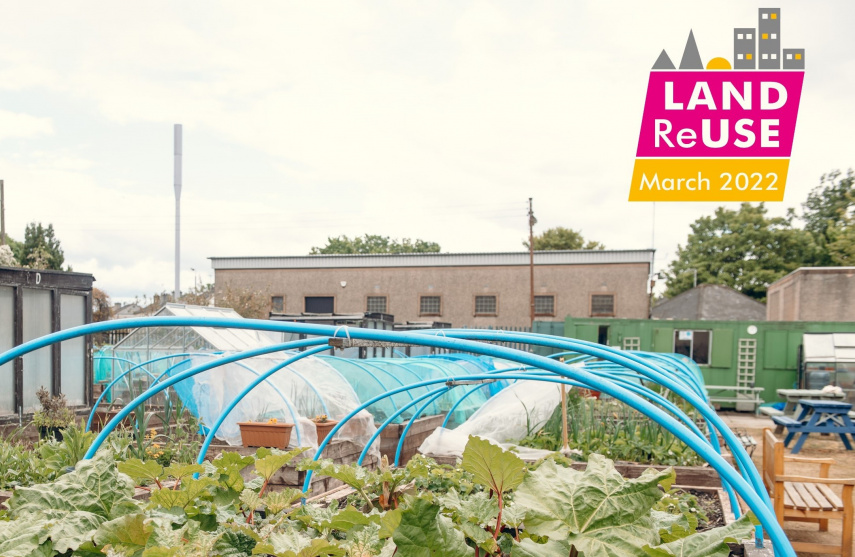
Our Guidance on Community Wealth Building was launched in the final session of Land Reuse Month 2022. Watch the video below to find out more, and visit our community weath building page to find out more.

